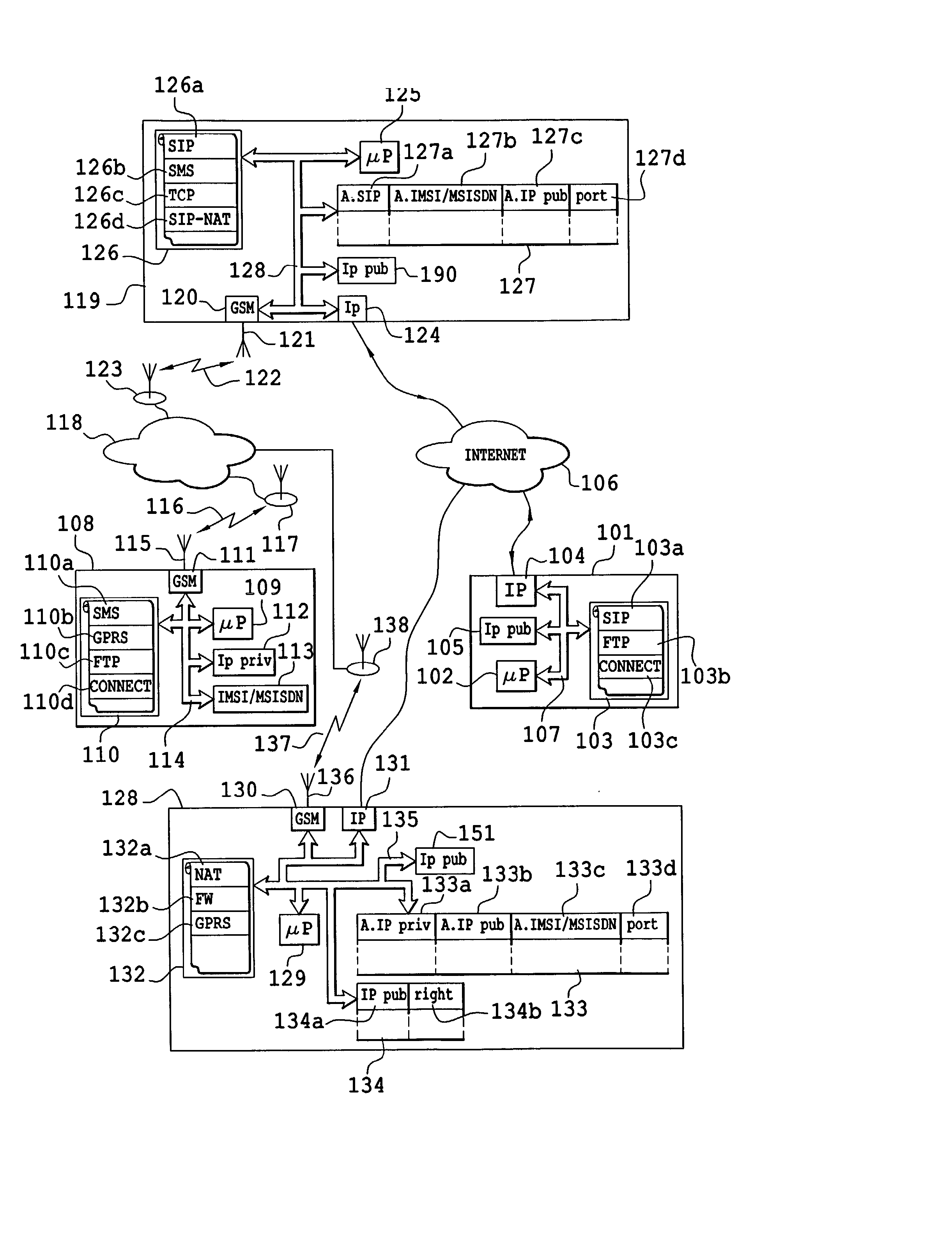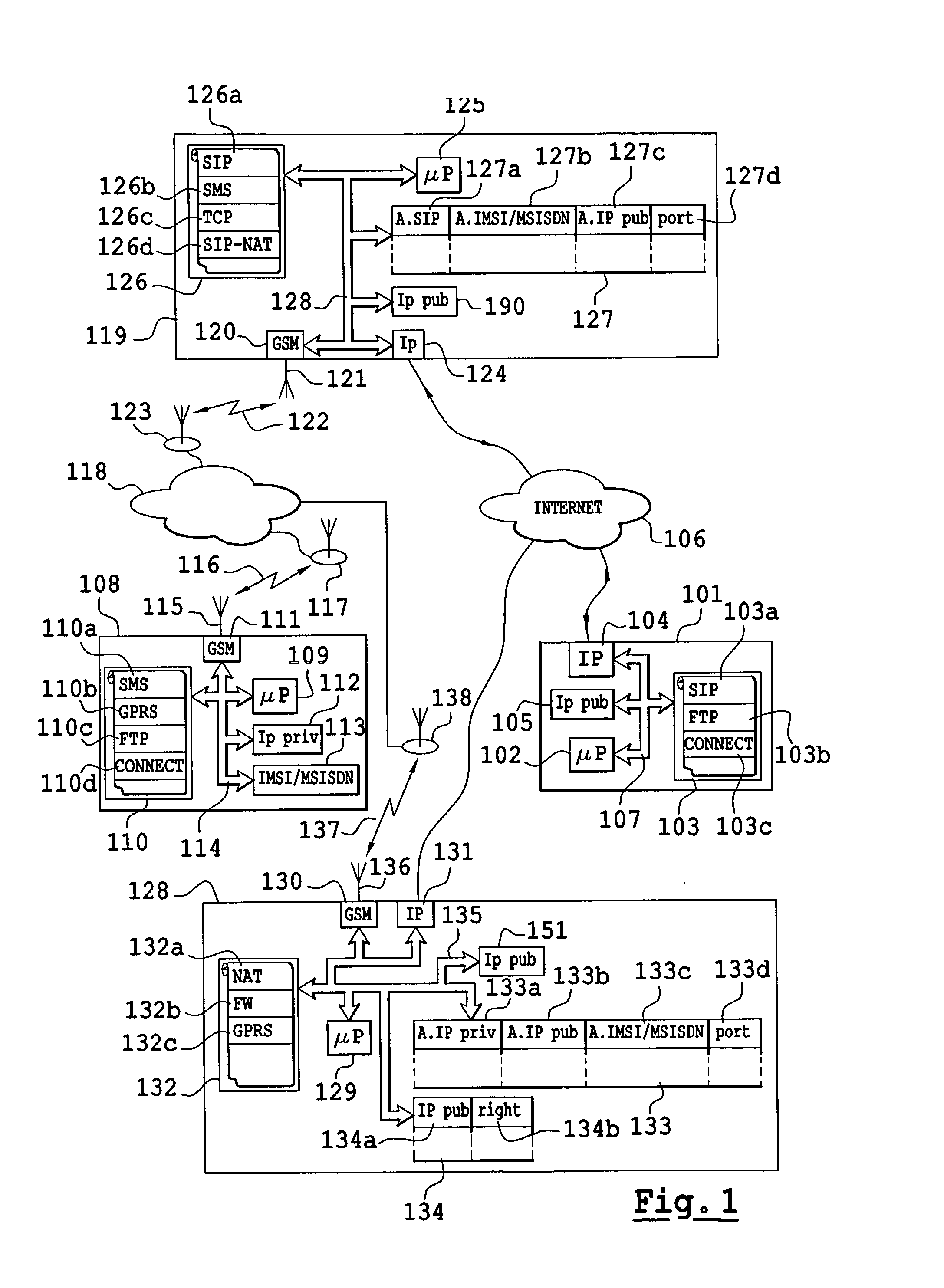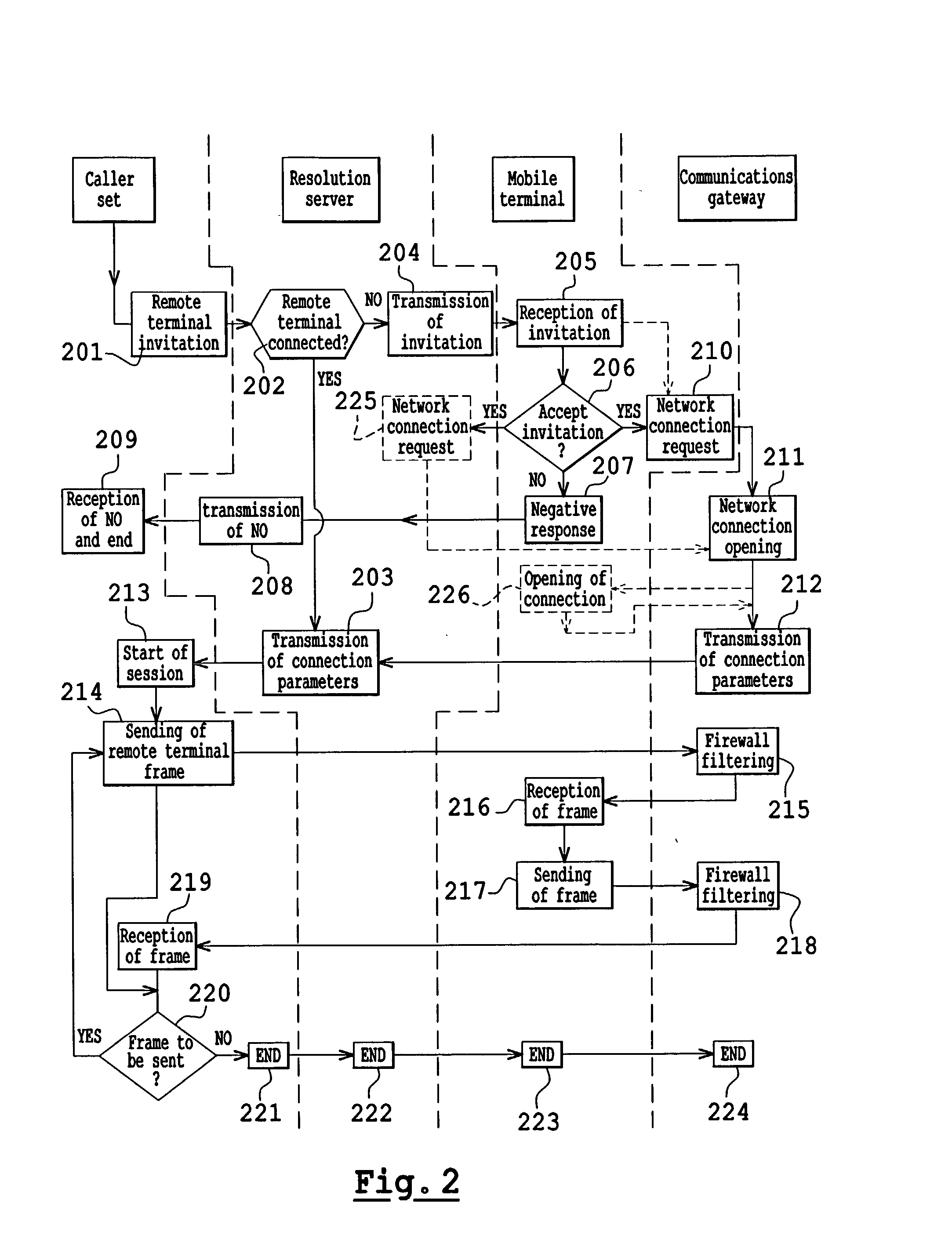Method for the addressing of a mobile terminal
a mobile terminal and addressing technology, applied in the field of mobile telephone addressing, can solve the problems of increasing the number of public addresses available in the internet protocol version 4 (ipv4), affecting the gprs/umts structure, and entailing a major cost for deployment of ipv6
- Summary
- Abstract
- Description
- Claims
- Application Information
AI Technical Summary
Benefits of technology
Problems solved by technology
Method used
Image
Examples
Embodiment Construction
[0032] It may be recalled that, in the description, when an action is attributed to a microprocessor or to an instrument comprising a microprocessor, this action is performed by the microprocessor controlled by instruction codes recorded in a memory. It is also recalled that a bus is a set of tracks or wires comprising elements whose number is sufficient to convey address, data, command, clock-interruption and supply signals.
[0033] FIG. 1 shows a caller set 101. The set 101 is, for example, a personal computer. The set 101 has a microprocessor 102, a program memory 103, interface circuits 104 for interfacing with an Internet network 106, and a memory 105 in which the public Internet address of the set 101 is recorded. The elements 102 to 105 are connected through a bus 107. The interface 104 connects the set 101 to the Internet network 106. The memory 103 has several zones, especially a zone 103A comprising instruction codes corresponding to the implementation of the SIP protocol, a...
PUM
 Login to View More
Login to View More Abstract
Description
Claims
Application Information
 Login to View More
Login to View More - R&D
- Intellectual Property
- Life Sciences
- Materials
- Tech Scout
- Unparalleled Data Quality
- Higher Quality Content
- 60% Fewer Hallucinations
Browse by: Latest US Patents, China's latest patents, Technical Efficacy Thesaurus, Application Domain, Technology Topic, Popular Technical Reports.
© 2025 PatSnap. All rights reserved.Legal|Privacy policy|Modern Slavery Act Transparency Statement|Sitemap|About US| Contact US: help@patsnap.com



